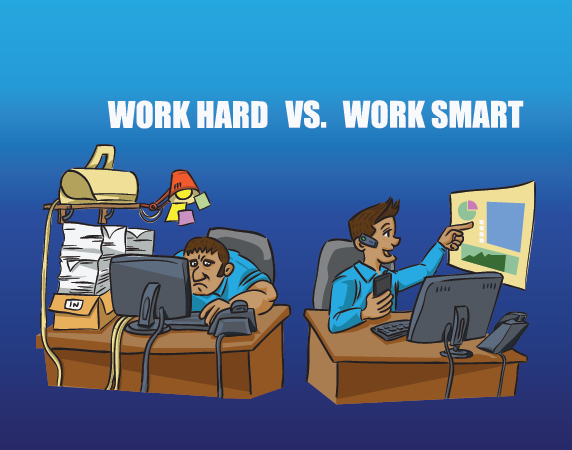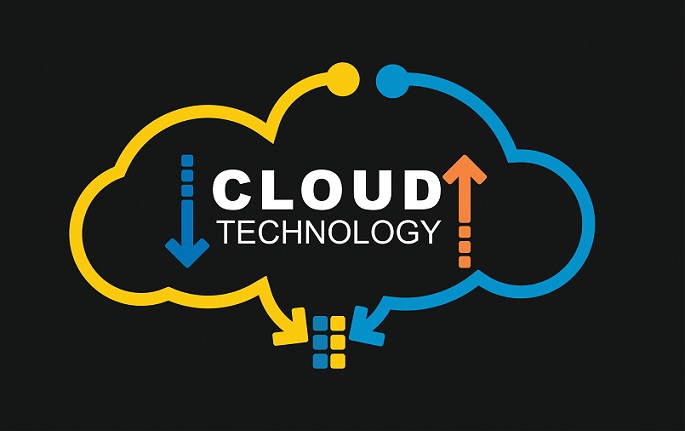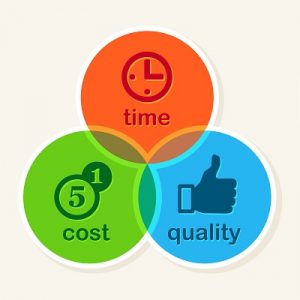Category: Business
AI continues to positively disrupt businesses around the world by empowering them with automation and data-driven insights.
In this video, Deepu Prakash, Head of Process and Technology Innovation at Fingent shares his expertise on deploying AI within the context of the modern business environment. He puts forth five crucial steps that you can begin right now to shift your company into an AI-driven model systematically.
Stay up to date on what's new

Featured Blogs
Stay up to date on
what's new



Talk To Our Experts
So, You– one of the key decision makers of your company, have a cool idea, a plan or a requirement for a software application, a mobile application for your business, a website, or need to automate an ineffective business process. You might have an overview of what you need, but can’t do it yourself, or you don’t know any good connections doing the job.
What would you do?
How will you choose that perfect custom software development company which can provide the best solutions among the millions of other custom software development firms out there? I am sure that you know there is a lot of difference between finding a software firm and finding the best software development company for your requirements.
The majority of the established firms out there are masters of their art providing excellent solutions and service. They are all well-experienced in creating software or applications from scratch to enterprise levels. Most of these have spent a considerable period in the industry, know the trends and are constantly striving in a market that is highly competitive and advancing day by day. So, how do you select that one provider from these many experts out there in the market? It’s indeed a very tricky job and should be done with caution. However, you will find great use of the points given below to select your right software outsourcing partner.
Identify your Needs
How can you choose the best when you don’t know what you want? Identify your business needs properly, talk to your employees, evaluate the problems and analyze the solution. Form an outline of the solution you want to meet the objectives. Depending on the nature of your project, the requirements and reputation choose offshore or onshore providers.
Check the Company’s Technical Skills and Expertise
Gather information about the company – the skill , knowledge of the team members and their portfolio working in the latest technologies in similar domain as yours, company’s experience handling projects in the particular niche/ domain, company’s skill in decoding your requirements into apt solution, the communication effectiveness, adherence to deadlines, and the like. Look for teams providing direct access to developers who can communicate well with you. Software houses with teams experienced in agile or hybrid agile methodologies are always better choices. Have casual getting to know each other kind of chats, but gather solid information in the course of your interaction, that clearly showcases their efficiency in previous works.
Check their Reputation with Others
Of course, you want to partner with the best custom software development company, but would you go for a company that is not polite and nice to work with? How scalable are their solutions? Know the company’s flexibility to get on with different atmospheres by looking at their client base and client relationship history. Check the clients’ and customers’ testimonials/reviews on platforms like Clutch, GoodFirms, etc. or connect with one of their clients through social media channels to know their opinion about the company, talk to real people via online forums, discussions and other social media to know their opinion, direct or indirect experience with this company. Doing these will sometimes leave you confused with overwhelming responses from different people, nevertheless, take an average of pros and cons and decide what cons can you overlook for better pros of the company that aligns with your requirements.
The Budget
Cost is always as important as the company’s expertise. Determine whether the cost of the project falls in your budget. Unless confident on the guaranteed ROIs, you don’t want to go bankrupt buying an over expensive software that automates parts of your business. That said, you don’t have to compromise on the quality of the software for low costs either. Certain companies price their solutions for the sheer fact of overcharging to seem like a bigger and better company. Do not forget to look for hidden or additional costs in the contract, like additional fees for documents management, annual setup/ maintenance in addition to monthly support charges, in-person training, etc.
Support your Core Business Functions with Efficient KPO Solutions.
Size of your Software Project
Is your project small, medium, large or huge? Not all companies undertake any size of custom software development projects. Certain software development companies commit only to big fishes, providing them giant, multi-year, million dollar projects. These are usually famous brands and industry experts. Whereas many smart small to medium size companies take multi-year projects. Such companies’ growth curve over a small period of time shall showcase their competency and potential. Has the company been growing fast or diminishing in size or stagnant over this period?
How Passionate are they to Develop the Solution
The company to which you outsource must understand your requirement in a way you understand and aspire to. Are they as passionate as you about this project? Are they completely dedicated to making a quality product or are they just doing a duty for money they take? These are evident from the way they suggest added features which can be included, future scopes for the product, or deny with an idea that is not quite useful. However, make sure they back their opinion with proper facts and reasons that convince you about their dedication and is not just to ‘make the task easy’ for them.
What happens in the Case of Divorce?
Jon Lincoln, business development specialist at Etfile says that, “Some vendors try shady tactics by holding your data hostage (as if they own it!) or charge an exorbitant amount to sway you from leaving”. Get proper agreement on safety and security issues and how you get your data back in case you leave the vendor. Expect some charges especially if the data was encrypted, but it shouldn’t make you bankrupt in any case.
Quality of After- Sale Support and Services:
Even the most perfect solutions guarantee only 99.9999% up-time. Unfortunately, there are no 100% perfect solutions. Even though too small, there is always a fraction of the chance that things might go wrong after delivery, especially in the case of software. So make sure your vendor company provides direct access to the technical team and offer good support, maintenance, cloud-based updates and upgrades and troubleshooting services for a fair period of time after sales.
Evaluate your Software Package Now!
Take a Test Drive
Most companies these days provide a free trial to ensure the quality of the features, benefits, and usability. Ensure that the software meets your requirements, have necessary features and functionality. During the trial, feel free to ask your vendor all the questions and doubts you may have.
Your first stepping stone to establishing your goal is choosing the right custom software development company. A fault here might lead to devastating results. So, take no chance, do thorough research and study based on the factors mentioned above. Based on our experience developing and deploying custom software for a wide range of industries and organizations of varying sizes, we believe that the Best Company is that which deliver a solution blending with your business process to the highest degree, within the stipulated cost and time and without a compromise on quality!
Stay up to date on what's new

Featured Blogs
Stay up to date on
what's new



Talk To Our Experts
This month we are covering how creating and fostering mobile-driven digital ecosystem help grow your customer base and provide services effectively. We will also be discussing how zero code platforms ease the pain of mobile app development. Lastly, we cover what happens when Machine Learning meets the business world.
Zero-Code Platforms Ease the Pain of Mobile App Development | Business.com
Enterprises find themselves plagued with issues like apps not performing as expected, apps scoring low on user experience and more. But with the benefits of zero-code being obvious to more and more businesses, more platforms are on its way to becoming mainstream.
Where Do You Fit in the Mobile-Core Digital Ecosystem?| Clutch
With the global proliferation of mobile users, enterprises must now focus on mobile-centric solutions. Such a rapid increase in global mobile usage points to a paradigm shift in the future of digital communications.
Mobile devices now act as the medium for facilitating all kinds of communications and services within an ecosystem. In addition, their improved connectivity options and versatility makes them ideal for all kinds of digital ecosystems.
When Machine Learning Meets the Business World| DZone
Let’s discover what happens when Machine Learning meets the business world. Take a look at how it will transform businesses as well as how it will minimize risks.
Stay up to date on what's new

Featured Blogs
Stay up to date on
what's new



Talk To Our Experts
iOS App Development: Grow Your Business With An iOS App
With smartphones and tablets emerging as the device of choice for most people, apps are in a boom phase. Businesses are joining the bandwagon in a big way, rolling out apps that offer a world of convenience to their customers and employees alike. However, while doing so, they need to be wary of losing focus.
Apps are not just another channel to execute the entire gamut of organizational functions. The most effective apps serve specific purposes, and in the process empower the business.
Businesses also need to take a serious look at iOS application development, considering iOS apps have proven to be very engaging. An average iPhone user spends about 75% of her time on apps, probably owing to iOS applications being able to leverage the advanced features and functionality of Apple devices.
Here are some ways in which you can empower your business, using iOS application.
Roll Out Customer-Facing Apps
Customer facing iOS app is a good idea, considering Apple devices, such as the iPhone, has more than a 15% share of the total smartphone market. Such apps not only promote sales but help in engaging with customer better. Marketers may send out push notifications on key milestones, keep track of customer behavior, issue special offers when a customer is in the vicinity of a store, and do more. Customers may be given several self-service options, from keeping track of loyalty points to access of neutral product reviews, and more.
Empower Internal Teams
Imagine the world of convenience when the salesperson, on meeting with a potential or existing customer, pulls out the iPhone, opens an app that draws on data from the CRM, and gather all details about the customer, right from his purchase history to open inquiries, his preferred channels of communication, and so on. The salesperson also gets highly customized tools and relevant insights, such as market surveys, reports, and more. iOS apps facilitate similar empowerment across all functional area, be it accounts, HR, logistics, and other teams.
Forge Deep Relationship with the Ecosystem
More and more businesses seek to develop apps that help the company forge deeper relationships with their ecosystem partners, such as suppliers, contractors, and others. An app that makes explicit real-time stock levels and issue alerts would prompt suppliers to make timely deliveries, and improve the efficiency of their business as well. Contractors could log into another intuitive iOS application to get a list of open projects, deadlines, billing, and more. Channel partners could also gain from first-hand access to a ton of resources, and all the information they require, without having to make follow-ups, or spend time seeking information.
Facilitate the “Internal” Customer
An iOS app could likewise benefit the “internal customer” of the enterprise. Employees could, for instance, use an internal employee app to make leave requests, access their payroll details, stay updated on everything from upcoming team meetings to office parties, and more. Such apps eliminate complicated and time-consuming paperwork, be it filing trip sheets, expense reports, or appraisal forms. With the bulk of information readily available at their fingertips, employees can focus wholeheartedly on their core tasks, improving their productivity manifold.
Streamline Internal Processes
Many enterprise apps streamline internal workings and deliver big productivity gains. Employees starting a task could hook up to an iOS application that guides them through the specific process flow, helping them complete the task without being bogged down by doing things the wrong way, or seeking instructions. The app could also facilitate electronic submissions of documents and bills associated with the task, and make sure the next in line gets a notification to process the same. The benefits are multifold and include reduced paperwork, better productivity, faster turnaround time, and cost-cutting. Still better, employees are empowered to do the task from anywhere, at any time.
Promote “Smart” Work
Apps can help employees work smarter instead of harder. A case in point: the average employee attends 62 meetings a month, wasting a whopping 31 hours in the process. A collaborative app that enables managers to set targets, notify team members of their targets and deadlines, allow team members to submit their results, and do more can eliminate a good chunk of such meetings, and save considerable time. Such app based internal communications is also a good way to overcome silos, a big stumbling block for the free flow of information.
Transform Organizational Processes
Rolling out iOS applications could even eliminate certain traditional functions altogether. For instance, a training app that delivers instructional videos, handbooks, and other resources to the employee’s iPhone could completely eliminate the need for training sessions. The cost saved in terms of arranging training resources and the trainer’s time alone would repay the investment in the app many times over. Employees could also leverage such apps to unlock training and development opportunities not available before. The impact on employee performance and commitment are worth its weight in gold.
All the possibilities come to pass only when the app development is done right. iOS developers would do well to customize enterprise apps by giving it a distinct look and feel that resonate the brand image, offer appropriate options such as choice of languages, flexibility to enable or disable certain features, location mapping and more. The ability to customize the app and the presence of value-added features make the employee feel more connected and enhance the worth of the app.
Development of iOS apps is a far more straightforward process, compared to developing Android apps, as Apple provides standardized SDKs, APIs, and IDE needed for the application development. However, Apple’s app store discards apps that do not meet its guidelines, and as such iOS app development requires a much more concentrated and focused effort. A partnership with a reputable company to develop the iOS application helps pass the iTunes test and ensure the effort invested in the app development process does not go waste.
Stay up to date on what's new

Featured Blogs
Stay up to date on
what's new



Talk To Our Experts
Write once, run anywhere – the alluring catchphrase of Java still seems relevant. Since Sun Microsystems unveiled Java, it has remained the most popular programming language in use. Object-oriented and class-based, Java stood its ground even when the development space became saturated with a plethora of new languages. However, with time, programming languages do get phased out once newer and better platforms take over.
And then came Kotlin. The search for a tenable Java alternative reached fruition with Kotlin, a statically-typed programming language running on the Java Virtual Machine (JVM). Essentially, Kotlin stripped Java of its complexities and came up with a refined alternative that is as versatile as its predecessor.
The Czech software company JetBrains unveiled Project Kotlin in 2011 with the objective of coming up with a better alternative to Java. They looked to Scala, another Java alternative with support for functional programming, but were taken aback by its slow compilation times.
Kotlin Goes Public
In 2016, JetBrains launched Kotlin v1.0, its official stable release to the public. Kotlin immediately gained traction among the Android development community. They lauded its refined framework and faster compilation times, complete with added tool support, as a significant advantage over Java. Things gained momentum when Google announced Kotlin as a first class language for developing Android apps at the I/O 2017.
What followed was an outburst of mainstream apps all written fully or partially with Kotlin. Kotlin had everything that developers couldn’t find in Java or any of its alternatives like, JRuby or Groovy. It is concise and 100 percent interoperable with Java. Added to that, Kotlin came with extensive compatibility with Android Studio in which IntelliJ IDEA, JetBrains’ own Java IDE serve as the backbone.
With interest in Kotlin skyrocketing, global adoption rates point to a widespread disruption. From freelance developers to software development houses, the adoption of Kotlin has increased manyfold. In the Stack Overflow Developer Survey Results of 2018, Kotlin is just behind Rust as the most loved programming languages. In the near future, Kotlin could become the de facto standard in Android development.
Kotlin’s Development Philosophy Strikes a Balance
Andrey Breslav, Kotlin’s lead language designer at JetBrains highlighted that the goal of Kotlin is to serve as a general-purpose language, which is concise, adaptable and fully interoperable with Java. By giving these extended set of functionalities, JetBrains intends to push the developer to migrate into Kotlin. Plain old Java has numerous flaws and the developers at JetBrains couldn’t conceive things as they wanted. For them, greater interoperability and productivity in the language is the need of the hour to quickly compile and execute code.
When working with Kotlin, we could easily pinpoint its structural similarities with its parent language, Java. The brains behind Kotlin did not just want to create a new language, but one which is in all ways a “better language” than Java. Platforms like Scala, although they offered extensive feature list and functionality, failed when it comes to build times and tool support. Kotlin managed to tick all the right boxes and struck a balance on how an ideal Java alternative should be.
Kotlin borrows some elements from Scala to bring out a more upgraded version. In fact, one could find that Kotlin does contain certain instances from other programming languages as well. Pascal, an early procedural and imperative programming language remained fairly influential in the development of Kotlin. Certain elements of it, like parameter lists and variable declarations with the data type following the name of the variable could be found in Kotlin too.
Bringing Full-Scale Interoperability with Java
What distinguishes Kotlin from other languages is its full interoperability with Java and the Android runtime. It is easier to call existing Java codes from Kotlin and Kotlin codes from Java. Developers could use all the Java frameworks to build highly responsive and feature-rich apps. Both the platforms, Kotlin and Java, identify each of their classes as their own, which enables seamless interchange and compatibility. This interoperability with Java could be demonstrated with a few lines of Java code as listed below:
MainActivity.kt
class MainActivity : AppCompatActivity() {
override fun onCreate(savedInstanceState: Bundle?) {
super.onCreate(savedInstanceState)
setContentView(R.layout.activity_main)
// accessing "getSum" method from a java class
val result = SumHelper.getSum(1, 2)
}
}
SumHelper.java
public class SumHelper
{
public static int getSum(int val1, int val2){
return val1+val2;
}
}
Fig 1. Kotlin – Java Interoperability
This extensive interoperability of Kotlin with Java owes it to the fact that JetBrains worked on all the limitations of Java and sought to bring out something more refined. Together, the team worked on a new version that is different but still has Java as its backbone. Besides, Kotlin fully supports Java 6 and 7, the current versions used by Android developers.
Java Lacks Key Elements that Current Developers Need
Java has been around for more than two decades. Developers still continue to build great apps using its highly versatile and robust framework. Like every language, Java too has its limitations chiefly because it is old. Even though numerous updates were released over the years, they failed to address some essential problems associated with coding using Java.
When it comes to Android development, Java lacks support for key elements like lambdas, streams, method references, etc. Null Pointer Exception continues to be a fundamental flaw of Java, particularly in the way it handles them. Null references in code often referred as the Billion Dollar Mistake is the key reason why several apps written in Java still undergo occasional crashes.
Moreover, Java is verbose and takes a lot of code to get even a simple program up and running. The APIs involved in Java get rather complicated as the developer is forced to go through multiple steps, which take more time. Kotlin, on the other hand, requires lesser coding than Java by reducing both redundant and boilerplate code, making development a whole lot faster.
A Class Declaration in Java
public final class PersonJava {
private final String name;
private final int age;
private final String email;
private final long phone;
public PersonJava(String name, int age, String email, long phone) {
this.name = name;
this.age = age;
this.email = email;
this.phone = phone;
}
public String getName() {
return name;
}
public int getAge() {
return age;
}
public String getEmail() {
return email;
}
public long getPhone() {
return phone;
}
}
In Kotlin
data class PersonJava(val name: String, val age: Int, val email: String, val phone: Long)
Fig 2. Side by Side Comparison of Kotlin and Java Code
Lesser code means developers can write a program in lesser time and the code has greater readability combined with fewer chances of bugs or manual coding errors. Memory leaks are also a frequent problem with Java due to the way it implements anonymous inner classes and nested classes.
Kotlin Edges out over Java in Conciseness
With Google’s official endorsement, Kotlin has become the most commonly used language for Android development. The simplicity and robustness of Kotlin means both proficient and novice developers can write and debug applications with ease. Generally, Kotlin requires fewer steps or ceremonies when writing code, which simplifies the process altogether. Compared to Java, Kotlin has:
- More concise class declarations because of primary constructors and properties
- Robust type interface eliminates the need for repeating the same types again
- Function parameters with default values mostly do away with delegating overloads
- Availability of top-level functions substitute static utility classes
Being more concise than Java, Kotlin edges it out when it comes to ease of coding. It takes a redefined approach to programming to untangle several complicated workflows that developers face when using Java.
Meanwhile, Kotlin’s less verbose coding decreases the time taken to code and enhances the readability while also reducing the chances for any errors or bugs. Writing lesser code means developers can reduce the number of boilerplate codes while improving their productivity and avoiding tediousness.
Kotlin is Nothing but an Improvised Version of Java
A notable benefit of Kotlin over Java is that it does not sway from being completely independent of the latter. In fact, Kotlin is an improvised form of Java, with all its limitations sorted out. Kotlin still relies on Java libraries but refines them all together to improve their functionality.
In the existing Java ecosystem, Kotlin manages to integrate each of its elements like the Java libraries, APIs and frameworks. In fact, Kotlin incorporates Java’s procedural and functional programming aspect at the right balance. Besides, its lightweight framework combined with modern features make it a refined version of Java that is in every way better than the original.
Android Development Gets Swift and Efficient with Kotlin
Kotlin aims at being pragmatic and productive at the same time all the while serving itself as a general purpose language fully compatible with Java. Owing to its compactness, Kotlin has proved itself a workhorse among the Android development community. It steers clear of all the limitations of Java with its full interoperability with the existing ecosystems of libraries and code. Here are a few reasons why Kotlin remains the ideal platform for Android development currently.
Developer Friendly:
Novice developers can easily learn and adapt Kotlin owing to its simplicity. It takes less time to learn to code with Kotlin due to its uncomplicated learning curve. Developers already proficient in Java would appreciate the familiarity of its coding process and streamlined approach to programming. Meanwhile, the availability of existing Java libraries, frameworks and lesser coding, amps up the speed of coding, allowing developers to conceive applications faster than before.
Excellent IDE Support:
IntelliJ IDEA, JetBrains’ own platform serves as the base for Android Studio and thus offers extensive IDE support to Kotlin allowing developers to seamlessly build apps. This ready integration with the IntelliJ IDEA framework enables access to its wide range of productivity tools. Configuring Kotlin plugin could be undertaken within minutes in Android Studio. Besides, every single process of coding in Kotlin from writing, navigation, debugging and unit testing happens effortlessly with the improved support offered through the IDE.
Enhanced Versatility:
Kotlin was designed to address some of the fundamental flaws in Java and it did well. Integrated into its framework is a built-in null checking feature that helps avoid frequent errors. Kotlin’s compiler also includes a feature that automatically corrects mistakes in the code simultaneously while it is being written in the console. These rich features negate several issues in Android development giving developers a clean and versatile platform to work with. Besides, it allows developers to streamline the production process through its features like search and auto-completion of code.
Open source:
JetBrains announced open source status under Apache 2 for Kotlin in 2012. The Java to Kotlin converter tool can seamlessly convert an existing Java project into Kotlin to save on time and work. Besides, it is completely free to use for any developer wishing to expand their skill set or get acquainted with its refined framework.
Summing Up
Every new language introduced into programming has the potential to disrupt it. Developers, when faced with limitations while working on their existing language readily adopt a new language that mitigates these issues. And Kotlin proved to be just that with Java. Its swiftness and concise nature proved instrumental in its widespread adoption among the Android development community.
For them, Kotlin seemed a better Java and its great interoperable support combined with expressive nature meant they could code just like they did with Java but in a fast and efficient manner. That does not mean that it will completely phase out the former. Java will still be around as a versatile language for years.
In times to come, newer versions of Kotlin gets released, which would be more developer friendly and complete with added features and support. More apps will utilize Kotlin to develop Android apps and there will come a point where it will ultimately substitute Java. Moreover, the steep adoption rates signal an increasing prominence of Kotlin for Android development in the near future.
Stay up to date on what's new

Featured Blogs
Stay up to date on
what's new



Talk To Our Experts
Opting for the Best Property Management Software
Leasing out condos or premium apartments to buyers does not end with the handover. Instead, it goes a long way almost in a cyclical manner to oversee the operations and management via close monitoring. Dynamically managing multiple residential or commercial real estate establishments could, in fact, prove to refine it all together as well as endow a consistent experience to the tenants.
The landowner or a real estate company benefits from able to supervise every cent of property they own and leases. It equates to improved productivity enabling the owner to gain a competitive advantage by striving for customer satisfaction at every fronts. This could be a rather not brief definition of property management. And with technology like software integrated into it, we can christen it aptly as property management software.
Investing in an apt property management software elevates and rethinks how realtors or landlords manage their swathes of property. Whether small modular condos, high rises or dedicated commercial hubs, property management using software takes it to the next level. The need to switch becomes more prominent as conventional methods have often failed to demonstrate exemplary levels of property management.
Software alters it into a convenient dashboard, where the owner could simply manage, monitor and operate day to day activities linked to a piece of real estate. Ensuring timely rental payment, maintenance and upkeep, searching tenants for occupying could all be effectively carried out using a property management software. The key is to opt for the right one since the wrong choice would end up curtailing existing practices by cutting out efficiency.
Clinging to Conventional Practices Risks Lagging Behind
As it turned out, property management involves a lot of hurdles that leave the owner frustrated and stressful at times. The job profile when it comes to managing multiple portfolios of real estate assets dispersed across varied locations coupled with maintenance requests, tracking lease expires, routine inspections, ensuring regulatory compliance, responding to inquiries concerning vacant properties and lot others would be equally challenging.
Extensive documentation remain a core aspect when it comes to property management. Besides, the above-mentioned aspects when not managed appropriately could add up to the inefficiency of the job, which reflects in the productivity and performance. Property management software is new and adopting it will definitely warrant less clutter involved in the process. Still, adhering to conventional practices like paperwork or documentation proves time consuming and cumbersome.
The right property management software makes life easy for property managers, improving their productivity and contributing to improved customer satisfaction in a big way. In fact, the right software becomes a valuable source of competitive advantage, enabling the firm to gain a one-up on competition through efficiency improvements and by spawning innovative business practices.
However, the trick is to have the right property management software on hand. Here are some ways to identify and deploy such software.
Good Property Management Software Distinguishes with Ease of Use
The whole purpose of deploying software is to ease things. Software with poor UX, and or convoluted processes, which is a pain to operate, defeats the very purpose. The best software has a smooth interface and navigation, and simple, yet powerful dashboards.
Handy property management software automates routine processes related to rental collections, renewals, and other repetitive functions.
It offers basic functionality like search with multiple fields such as tenant name, property id, or any other relevant identifier, to access the required information easily, and throws up what is required in an easy-to-consume way.
The software is now delivered as mobile apps, making it very easy and convenient to get access to the latest and relevant information on the field and capture field-based inspections as well. Responsible design or a mobile-first design approach improves the ease-of-use of such mobility solutions.
Good Property Management Software Feature Robust Technical Stack
Enterprises vary with regards to their technical maturity. Some enterprises may be perfectly at ease experimenting with newer but unproven technology, which may offer huge benefits but also come with the risk of crashes. Other enterprises prefer stability over potential. Either way, the cloud is fast becoming indispensable.
Cloud-based software spares the cost and hassles of installing software or managing the databases on in-house servers. The data resides on the Internet, enabling anywhere, anytime access, from any device. Besides, it spares enterprises from cost-center activities such as taking backups, updating the code at regular intervals, and other administrative hassles.
Property management firms placing their key data such as rental information, financial reports, documents and everything else on the cloud can streamline operations, thus saving time and reducing costs.
Sync with Technical Capabilities Enhance the Dynamism of the Suite
Smart solutions, especially mobile-based solutions leverage the latest that technology has to offer to enhance the capabilities of the property management suite. A case in point is a messaging system to engage with landlords, tenants and service providers on a direct, real-time basis, to close and resolve issues or deals quickly, and with clarity.
Such a system could either be custom developed or more easily achieved by seamless integration with Skype or some other messaging tools. Similarly, many property management suites integrate with QuickBooks for accounting.
Likewise, good property management suite improves internal processes, making the overall business more efficient. The easy tracking capabilities on offer make stakeholders, especially service providers, more accountable. An optimized navigation system renders role-clarity to employees and agents.
The Feature List is a Double-Edged Sword
A lengthy bucket list of features is no indication of having the right software. In fact, an application with too many features may become bloated and deliver poor user experience. The trick towards deploying the right software is ensuring it has all the relevant features required for seamless operations, nothing more, and nothing less. All things aside, a decision to opt for a reliable property management software starts with assessing the needs.
A realtor or property management company owner first need to consider, whether software indeed can prove to be an advantage and uplift their business process. They need to figure out up front what they want the software for, in terms of their biggest challenge, and prioritize the functionality list towards resolving such challenges.
One could ask themselves some noteworthy questions in the interest of choosing the right software such as:
- What are some key issues faced and how would software resolve each of them?
- Is mobility an option for the work – which require the software to come in a compact and handy mobile app version?
- Are self-service portals needed in the software to serve the needs of customers like residents or clients?
- Is the software having accounting features and capable of dealing with large volumes of maintenance requests?
For instance, if the biggest challenge is managing rentals, make sure to co-opt features that alleviate specific challenges to this end. Other features, such as compliance reporting or communication capabilities are handy add-ons, and should not be the core focus of the suite.
Mobile apps especially work well for specific purposes, with different apps for different objectives of stakeholders. For instance, a property manager could have apps helping them keep track of rental expiry, invoice and payment tracking, maintenance schedule and more. An app for a field service executive could have features such as open service tickets, directions to get to the property, and more.
Apps for tenants could integrate features to initiate maintenance requests, pay rent and fees online, auto-renew lease, and more. Above all, it should integrate stringent security measures such as two-factor authentication or high-end encryption to protect vital customer and company data from any intrusion attempts both internal or external. A comprehensive property management suite could integrate all functionality, leading to seamless integration and better coordination.
Work Orders are Core to an Intuitive Property Management Suite
Intuitive property management software facilitates creating and managing work orders, either through a ticketing system, or some other method. Successful deployments integrate the entire workflow connected with the process, right from raising the issue, assigning work to the relevant service provider, keeping track of work execution, and invoicing. This spares property managers from the hassles of manual monitoring and tracking.
Advanced systems come with the ability to incorporate images and videos, facilitating visual work orders, property viewing, and more. Such innovative functionality helps property managers get more work done without the time-consuming activity of making site visits.
Reporting Capabilities are Integral to Software for Property Management
Another crucial consideration for sound property management software, regardless of the functionality, is the reporting capabilities on offer. The ability to generate dynamic reports easily saves property managers time and enables them to stay on top of the game. The greater insights on offer contribute to improved customer satisfaction as well.
The best software for property management facilitates dynamic reports, in the format of choice, rather than straight-jacketing the reports to a few fixed forms. An intuitive software integrates report with analytic capabilities, allowing property managers to gain insights from raw data in easy-to-consume actionable format.
The property manager’s life will become considerably easier if the software integrates full double-entry accounting, with flexible reports. A spin-off benefit of such functionality is the ability to meet various financial and regulatory compliance requirements.
The Best Property Management Software is Optimized for the Budget
Many enterprises get carried away by the potential on offer and ignore the crucial cost competently. There is no free lunch, and even supposedly free open source software comes at a price to develop and customize. The costs for server space and hosting, and ensuring security is another crucial consideration to decide up front. Successful property management firms engage smart developers who can optimize the features and functionalities within the constraints of the available budget, without sacrificing quality.
Professionally managed real estate investment market is worth $8.5 trillion globally as of last year, but it has traditionally lagged behind in technology. However, innovative companies are changing things and technology is all set to improve the owner-tenant experience significantly via a major technological disruption soon.
Selecting the right software is both a science and an art. Apart from the science of carefully evaluating the feature list and the technical specs, comes the challenging, yet often underestimated “art” of identifying vendors who “fit.” Any software, no matter how robust or comprehensive requires continuous support for upgrades and bug-fixes.
Moreover, implementation is often a challenging exercise, involving training end users and documentation. Choose a software vendor who is competent and has proven their worth in all these facets.
Stay up to date on what's new

Featured Blogs
Stay up to date on
what's new



Talk To Our Experts
As a company grows and faces new challenges, a continuous evaluation must be done on the current work processes and IT solutions so as to analyze whether they can address these challenges. Performing a periodic gap analysis in ERP implementation helps assess the direction in which a company is headed. Moreover, it can also determine whether the company is equipped with the right kind of tools to get there.
Some of the common issues that companies normally need to look into are:
- Streamlining day to day operations so as to improve productivity and profitability
- Recognize the need for collaborating with business partners
- Generate more insights for decision making
- Meeting regulatory requirements
- Adapting and scaling the business
Most companies rely on a combination of manual and automated workflows, legacy applications, and databases to run their business. These systems may serve their purpose for quite some time, but will eventually run out of options for scalability leading to productivity gaps. In today’s highly competitive markets, inefficient systems can seriously affect the productivity, profitability, and growth of a business.
Dealing with separate systems can become a hindrance to growth and profitability. At the same time, companies can benefit from ERP systems to help define best practices, optimize workflows and achieve a better view over the various business processes.
By automating business processes, companies benefit from the increased accuracy, accelerated data flow and streamlining of day to day activities. This, in turn, gives the staff more time to focus on areas that require personalized attention.
The Need for GAP Analysis in ERP Implementation
Considering the rapidly evolving ERP market and ever-changing needs of companies, it is very essential that gap analysis is done on a frequent basis. This can assess the relevance of legacy systems and ascertain whether the organization’s demands have outrun the capabilities of these systems. GAP analysis helps in providing precise analytical data to compare the costs involved in an upgrade versus the value addition that the upgrade brings in.
Performing the GAP Analysis
GAP analysis is the technique of listing out the steps to be taken for a company to move from its current state of operations to a desired future state. The analysis begins with highlighting the company’s current situation, listing factors to achieve the objectives, and also planning out the key steps to put into effect for bridging the gap between the current situation and the desired future state.
Besides, undertaking an ERP implementation also imply conforming to common market forces and regulatory requirements. The following checklist will help analyze whether the existing system meets your unique business requirements. In addition, this will also guide you determine whether to enlist the services of a consulting organization to perform a detailed evaluation for accurately assessing the value that a state of the art ERP system would bring about.
Does your organization need to comply with government regulations?
Many companies in various industries must comply with various regulations constituted by the government. Some of these regulations include:
- Sarbanes-Oxley Act for all public companies
- OSHA Hazard Communication Standard
- ANSI
- European Union REACH (Registration, Evaluation, Authorisation, and Restriction of Chemicals) legislation for chemical companies
- The Bioterrorism Act
- HACCP (Hazard Analysis and Critical Control Points) for food and beverage producers
Most companies find that managing these government regulations are burdensome and costly. The higher costs are attributed to the fact that many of these are managed manually. Moreover, manual compliance processes not only increase the cost but also leads to inaccuracies and time delays.
Do you need to streamline your operations to improve productivity and profitability?
In today’s competitive world, organizations need to continuously improve their processes and streamline their operations to reduce costs and increase productivity. Manual systems can be time-consuming and slow down the business processes due to rekey of information into multiple systems. Furthermore, to add to the trouble, there are a lot of inaccuracies as well.
Do you need to enhance your decision-making capabilities?
With the increasingly competitive market, it is essential that your company has all the required info to guide you in making the right strategic decisions. When data is spread across various systems and spreadsheets, it becomes increasingly difficult and time-consuming to create reports that are needed to support key decisions.
Do you need to collaborate with partners?
As your company grows and the market conditions fluctuate, it may become unavoidable to not team with partners in various industries across different geographical locations. During such collaborations, effective and hassle-free communication becomes vital to meet customer expectations, maintain loyalty and remain profitable at the same time.
Does your processes and systems scale with your business?
Scalable systems are an absolute necessity considering the competitive markets that thrive today. You will need technology solutions that not only cover your present needs but also accommodate the growth of your business in the future.
Are you planning to grow your business globally?
If the answer is yes, then you will definitely need systems that address the following:
- Global currencies
- Multiple Languages
- Global regulatory specifications
The Output of GAP Analysis
- The GAP analysis will give a complete overview of the system
- It will inform the organization or business, how much value the ERP system will precisely bring into the various business processes
- At times, it may also lead to the conclusion that the implementation of an ERP isn’t needed for the organization when analyzing the value being added
Conclusion
Modern day companies face adverse competition due to rapid market shifts. In the midst of new technological innovations, the adoption of an ERP system is a big step for the growth of a company and its productivity as well. GAP analysis remains an indispensable part of this entire process and companies should focus on it more and give the importance that it deserves. The value adds by giving you a detailed retrospective of your business processes and the current systems are much more than the costs involved in the same.
Stay up to date on what's new

Featured Blogs
Stay up to date on
what's new



Talk To Our Experts
What kind of business software works for your business?
Business software marketed by developers for enterprises are available in two categories: tools and solutions. So, which one is compatible with your business and why should you rely on that instead of the other?
Finding a solution to this question will give you a clear picture of the kind of software that you need for your business. Picking a business software tool or solution has its differences. Both aids in managing and optimizing the workflows so that the business processes run as you envision.
The end results are usually the same but what differs is how the two functions and what features you have at your disposal. Knowing about this will guide you in preferring a business software for managing your operations. This article details some useful tips to help you choose between a business software tool and solution.
Why do you need a Business Software?
In managing your business, what are the criteria or standard rules that you normally carry out? Extensive paperwork, registers, accounts books or any novel ways that you have invented. They were reliable once upon a time as the scale of business operations were much confined, then.
But, in this ever-connected world, such methods have become rather unconventional. Today the entire world is shifting digitally and enterprises have been at the forefront of this rapid revolution. Digital tools and software have become the standard for carrying out almost all kinds of business operations.
It transformed all the vital processes in the domain of business and management. For instance, a direct example would be the software and tools used in a supermarket to generate bills and invoices as well as track their warehouse status real-time.
Business software steers clear of conventional approaches to managing a business in favor of digital tools. They combine powerful processing with quick and feasible results, enabling businesses to do more in less time.
If you look at the overall spending for migrating to such new and innovative approaches, it will give you a rough idea of the growing prevalence of enterprise software.
The total spending that enterprises have accumulated for specialized business software have ratcheted in 2018 alone. The coming years and the end of this decade will witness an explosive growth and demand for enterprise software by information technology and related companies worldwide.
Simply stated, depending on a business software will give your businesses the following plus points:
- Simplify operations to manage any of your business projects
- Easy scalability that grows with your business
- Rich features that integrate all key functions
- Anywhere, anytime access via any digital device
- Robust and swift data processing
- Integrates work and enhance focus
Business Software – Tools and Solutions
When approaching a business software, you will stumble across two categories such as tools or solutions. You cannot just go and opt for one without a clear idea about the differences between the two. They are essentially software but have their own differences in the features, functionality and user experience.
Basically, a tool is just one application specialized for managing your enterprise operations. A tool is a bundle of features and services that let you manage all operations within its confines. So, you will limit connectivity, for when, if the processes do not move as expected.
Software solutions are made for enterprises with large-scale operations and have preloaded features and guidance that will let you navigate your business processes with ease. Solutions usually come as a contract where you sign up for the services of a solutions provider.
You are allowing an external agency to give solutions for all your key managerial operations. This takes the workload off your shoulders and the people, which gives you more time and energy to focus on important matters related to your business.
Addressing the Pros and Cons of Tools and Solutions
Tools
Pros – A business software tool has the major advantage of affordability. Developers can customize the software so that it suits the business while incurring only lesser costs. Therefore, software tools are particularly apt for small businesses which have only a limited range of operations. They come with an intuitively designed interface and are easier to use.
Cons – Software tools are just an application designed to do a specific task but limited in its functionality. How you gain positive results rests entirely on how well you use the tool and its key features. There is no external support that will help you trudge through difficult processes and operations. Besides, there is no guarantee that a software tool works for your business to earn the desired result.
Solutions
Pros – Solutions are the perfect means to tackle the large-scale management processes of big enterprises. Packed in software solutions are some leading and highly dependable features like expert guidance and coverage across the entire aspects of management. Solutions can make a ready change in how the operations are managed, which has the immediate effect of driving growth and innovation.
Cons – Software solutions are typically costlier compared to tools. Businesses relying on a solutions provider need to pay exorbitant charges to keep their management processes up and running constantly. It is not within the reach of smaller businesses and is only meant for large enterprises and corporations.
What Business Software Should You Choose – Tools or Solutions?
So, when deciding between the two, which one will you opt for in assisting your business? Firstly, the needs are to be clearly addressed. Failing to do so will result in ending up with a business software that does not correspond to the business you are doing.
Selecting among both business software – tool or solution will give you the results that you are looking for. But to truly help in dealing with your daily business management processes, it is vital to choose the right one.
Tool
Opting for a software tool is an excellent option if you run a small or medium scale business. If you run a new startup or are already figuring out the ways to manage your small business, then a tool would best suit your requirements. When picking a tool for your business, you need to consider the following questions.
- What use will it have on my business and who uses it?
- Has it got any integration features with other business systems?
- What are the needs of employees and does it serve their needs?
Request a demo of the software from the vendor before you move forward with the purchase. This gives you an overall idea of the software, which helps you understand whether it has the features and functionality that you are looking for.
Meanwhile, a demo could also give your employees a hands-on experience with the software to find out whether it goes smoothly integrated into their work practices as well. Moreover, considering the pricing of the software by comparing across different vendors will help you choose one that fits in with your budget.
Solution
A solution encompasses a much broader range and extends beyond the limitations offered in a tool. It is particularly for business process change and has a service provider that takes over the managerial functions of the enterprise. If you run a large-scale enterprise, then a software solution will benefit your business more than any other.
Basically, the reliance on solutions helps in driving better management and relieves the workload on your employees. A typical example of software solutions is ReachOut Suite, a field services management software for managing work orders. Technicians can easily carry out field works with efficiency due to the centralized cloud-based system of ReachOut, which are accessible via mobile devices.
When choosing a software solution for your business, you should address all your requirements with the vendor. This is the preferred option than opting for a trial or demo of the product. In this way, the vendor or a software development company can work out with your estimate and give you solutions tailored for tackling all your management problems.
Summing Up
It all gets down to your need because that essentially determines everything. A tool can serve you well and help deal with issues related to managing your crucial business operations. It can aid in your business functions for making it easier within its stand-alone solution. Besides, they are affordable too, helping you decrease expenditure along with a boost in performance.
Solutions, however, are a complete offering specially designed for solving management problems of large enterprises. And so, the pricing is larger, but you get what you need, which is expert guidance and overall efficiency in the process. This unifies and liberates work in your business, helping you solve issues, maintain operational efficiency and opt for business process change.
Stay up to date on what's new

Featured Blogs
Stay up to date on
what's new



Talk To Our Experts
Nearly 2.6 billion people across the world today have access to a high-powered smartphone, at all times, and seven out of every ten people will have access to a smartphone by 2020. Android phones constitute a bulk of such devices. Businesses are slowly but steadily discovering the merits of rolling out an outstanding Android app to improve branding and customer engagement. A well-designed app allows the brand to communicate the brand message effectively, and develop a sustainable relationship with the customer.
Here are the ways in which a standout business app allows an enterprise in branding and customer engagement.
Delivers a Streamlined Experience
Enterprises need to be able to assess and refine the usability of the app and identify pain-points such as why high volumes of app downloads are not converting into customer registrations or conversions. They need to quantify the impact of the app experience on the customer’s overall brand perception.
Making things simple and easy for the customer is a sure-shot way to raise the value of the brand in the eyes of the customer. Brands need to identify pain points in customer interactions and work to mitigate it in all earnest. Rolling out an app invariably helps the enterprise streamline their engagement with the customer.
The best apps are highly focused, based on delivering a specific or much sought-after functionality for the user. For instance, the app could make it easy for customers to interact with the brand, offering an easy way to search the FAQ, do self-service, get in touch with customer support, and more. Such an app plays into today’s overriding sentiment of instant gratification.
An app could also be used as a single point access to the social media pages and other digital assets of the brand.
The best app encourages active feedback and co-opts such feedback in newer versions of the app, with a central focus on improving customer experience and delivering more value to users. An app not updated frequently creates potential compatibility issues when the mobile operating systems are revised, and moreover, users are reluctant to risk downloading or using something seemingly abandoned.
How Business App Offers Proactive Communications
Unlike a website which the user has access every time by typing in the URL, an app once downloaded remains in the user’s phone, and may be accessed conveniently, even when offline.
When a customer installs an app, the business may send notifications directly to the app, bypassing the often-ignored email inboxes. Such push notifications gain high visibility and also allow the brand to reach out to the customer on a 24×7 basis.
Push notifications are invaluable in grabbing customer’s attention, even when users do not actually use the app. Push notifications boost app engagement by a whopping 88%, with Android users way more receptacle to such notification compared to iOS users. The best push notifications, with the highest click-thru rate, are personalized and contextual, such as being based on the product last viewed by the user, including the user’s name, and co-opting other nuances.
Today’s consumers want information within seconds, and service in double quick time. Very few take the pains of seeking out the brands’ website or social media page. If the customer can be persuaded to download an app as a one-time effort, the brand can easily push the required information and engage with the customer proactively. Customers can get the required information or make the purchase equally easily, creating a win-win situation.
Delivers Deep Customization
The most successful customer-facing apps personalize the user experience. The business co-opts emerging technologies like near field communication (NFC), artificial intelligence (AI) and machine learning to understand the user’s choices and preferences.
Smart marketers leverage the apps location tracking capabilities, beacon and geofencing technology to send location-specific, contextual, and timely data-driven content to customers. A case in point is leveraging beacons to push location-based offers and promotions, promote loyalty programs, and facilitate mobile-based proximity payments.
The Pew Research Center estimates nine out of ten smartphone users in the USA enable location services on their mobile phones.
Complements Brick and Mortar Buying
Many retail businesses now offer apps to can enhance customers’ in-store experiences. The app could, for instance, allow the user to scan the barcode of the product, to check availability, different variants, price, product reviews, and other information. Some businesses also offer the possibility of adding the item to the cart and even ordering the item online, sparing the hassles of queuing up at the till or even carting the item home by oneself.
Customer facing apps go a long way in delivering a consistent and seamless omnichannel experience for the user and integrate the physical and digital world.
Businesses could take a cue from 2016 Coachella music and arts festival, where fans who downloaded the app received out location-based notifications about artists and vendors to attendees, and offered beacon-enabled mobile payments to attendees, sparing the need for a physical wallet.
Another success story worth benchmarking is Domino’s Pizza’s new mobile app which allowed customers in the UK to order delivery or in-store pickup. The app has been downloaded more than 10 million times and resulted in a 24.4% increase in e-commerce sales.
Brands, however, cannot afford to rest on their laurels of having successfully coaxed customers to install their apps. The app itself needs to be updated regularly, co-opting new content and features. App developers also need to remember users are doing the brand a favor by installing the app on their smartphone. The brand should not misuse the generosity by taking up too much space causing the system to hang, or offering vulnerabilities which allow potential hackers access to the smartphone. It takes the services of a sound a competent developer to create sound and robust apps which offers real value to users.
Stay up to date on what's new

Featured Blogs
Stay up to date on
what's new



Talk To Our Experts
Every year, Clutch, the popular B2B ratings and research firm publish a report on the leading players in the software segment. Constantly updated, these listings review companies excelling in software development and curate them accordingly on how they rank within Clutch’s assessment criteria. This time, Clutch has come up with a new report listing the top custom software development companies currently serving the market.
From about 5997 firms, Clutch based their evaluation on client reviews, market presence, experience and the ability to deliver. Among the multitude of firms reviewed, Fingent Corporation ranks among the top custom software development companies. In the Clutch Leaders Matrix, Fingent manages to keep the right balance and stays on top with an overall score of 39.3.
Market presence, clients and experience each scored remarkably well with 9.5 and 9.75 points. Fingent’s 50 percent service focus in custom software development reflects its proficiency in conceiving tailored solutions to businesses of all kinds. Itransition, its main competitor stays side by side scoring 39.4 in the ability to deliver, 9.4 in market presence and 10 for clients and experience.
Why Clutch Listed Fingent as a Top Custom Software Development Company
Striking the right balance in terms of service focus, client reviews and experience is the key. Fingent manages to ticks all boxes with its proficient custom software solutions that cover each of these critical aspects. Clutch base their assessment by keeping these factors in the spotlight, which is the sole reason why Fingent came on top.
Clutch undertakes a different approach to identify leading software companies. Several credible factors go through stringent evaluation such as valid feedback from current and previous clients, ability to deliver high-quality solutions to clients consistently, solid market presence, services offered and many others. Moreover, the ratings also focus on the company’s passion in work, intent on client satisfaction and commitment for delivering quality and innovative results consistently.
Fingent puts more emphasis on driving value to their customers and strives constantly to achieve this in the plethora of solutions they offer. Deep expertise in software combined with a varied client base across multiple industries enables it to come up with new ways to blend in industry standard practices and innovative approaches together. Apart from that, the company believes in building good levels of trustworthiness with their clients and work towards fulfilling it in everything they do.
For instance, a majority of clients states that working with Fingent allowed them to reduce their quality control costs largely, that at times amounted to about 70 percent.
Technical Competency
Solid technical proficiency stands as the fundamental ground in which most software development companies operate. Fingent’s team of skilled professionals dispersed globally have strong background and experience in the cutting-edge technologies of today to resolve every challenge they face. With its diverse talent pool, Fingent’s services extend to further include the entire web and mobile development segment such as enterprise software development, web application development, mobile application development, SaaS development, etc.
Seamless Collaboration
Collaboration could work across different levels and each of these influences the results considerably. Companies building software solutions need effective collaboration with their clients on a consistent basis to guide the development process across individual levels so that the finished product resembles exactly what they envisioned. Besides, these collaboration exists among the development team, administration departments, designers and those in the top of the organizational hierarchy.
Fingent’s qualified development teams push the software development process a step forward by integrating effective collaboration across all levels. These facilitate improved collaboration with the clients so as to adhere close to their requirements, spice up communication among the stakeholders and brings the development teams to adopt proven methodologies for ensuring successful delivery of the project within the stipulated deadlines.
Cost Effective
The costs of building a software are proportional to the amount of functionality offered in it. Some development companies build software by trimming down the functionality and features, which adversely affects its quality and usability. Fingent’s approach is unique, as it applies modern design principles without sacrificing on any key functionality to deliver highly dependable and efficient software within affordable pricing.
Leveraging state of the art cloud, mobile and web technologies enable Fingent to come up with tailored solutions at reduced costs. There is better streamlining of the software development across its entire lifecycle with the adoption of lean principles as well as simplification of business processes utilized by the clients.
Summing up, the deep expertise and leveraging of latest technologies bring about more accuracy in quotes, which include all aspects of development from scratch to the finished product. Adhering to proprietary technology and custom practices enable Fingent to bring out solutions quickly and on budget. $25 to $49 per hour is the average development cost for standard projects at Fingent.
Strong Establishment
A firm establishing background nurtures a work environment that prompts growth across its entire development workforce. Fingent since its beginnings in 2003 has quickly expanded and in the years that followed evolved into a reputable company build on the foundation of trust, value, and efficiency. Deviating from conventional methodologies and practices, Fingent’s uniqueness lies in its approach of following up its projects even after deployment in the form of continued support.
Based in New York, USA, Fingent grew in scope and client base that resulted in widening its operations on a global footprint. There are branches in Boston and UAE as well as two research and development centers in India to scale up infrastructural and talent base for serving the growing client base. Fingent’s impressive clientele counts among the industry’s leading names that range from Fortune 500 companies to budding startups.
Multinational conglomerates like Sony, Johnson & Johnson, NEC, PWC etc. are some of the partnering clients that leverage Fingent’s expertise in carving out robust software solutions to resolve their individual challenges. This growing client base stretches across 14 countries and 4 continents. Moreover, the company maintains an active 300+ full-time employees, classified into separate teams for improved collaboration and swift delivery of solutions.
Fingent’s tailored solutions seamlessly integrate with the requirements of enterprises to help them optimize their processes and operations from its core. Get in touch with our solutions consultants right away to bring the advantage of robust cost-effective software solutions into your business for redefining it all together.
Stay up to date on what's new

Featured Blogs
Stay up to date on
what's new












































































